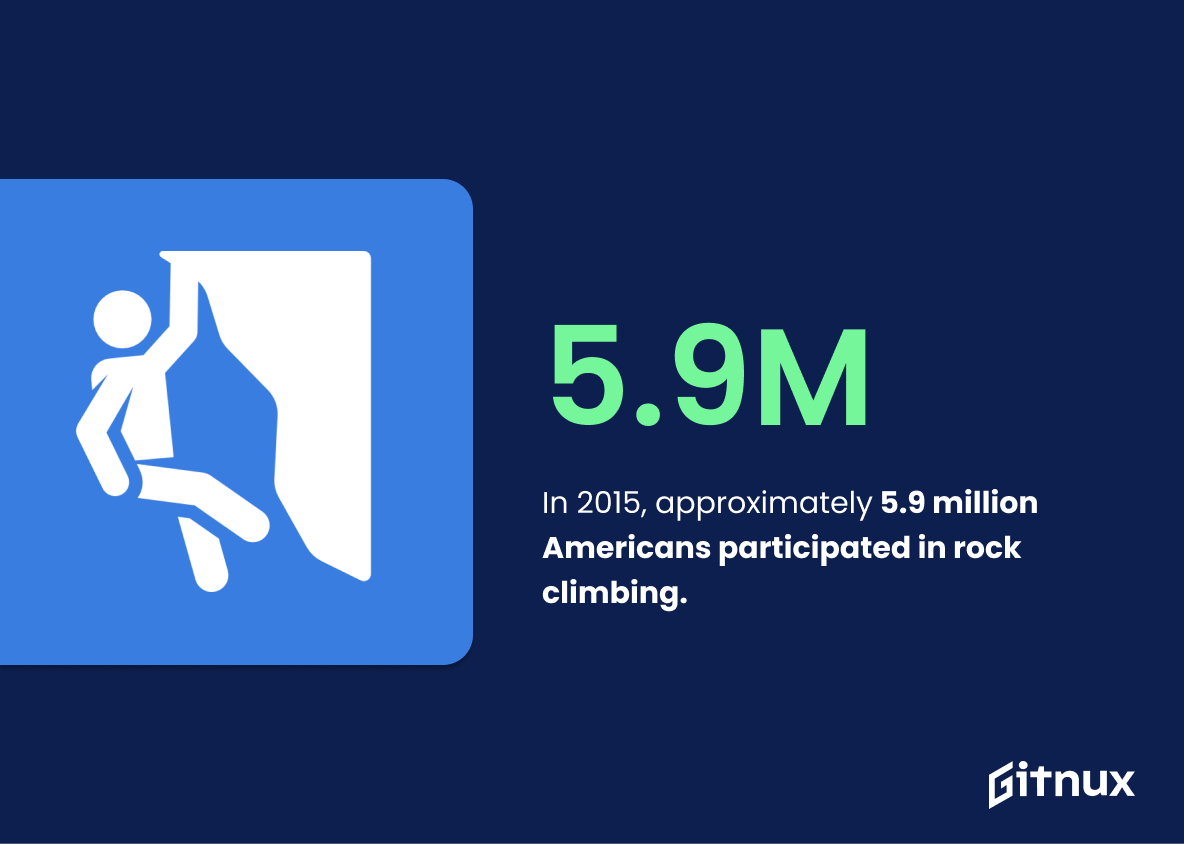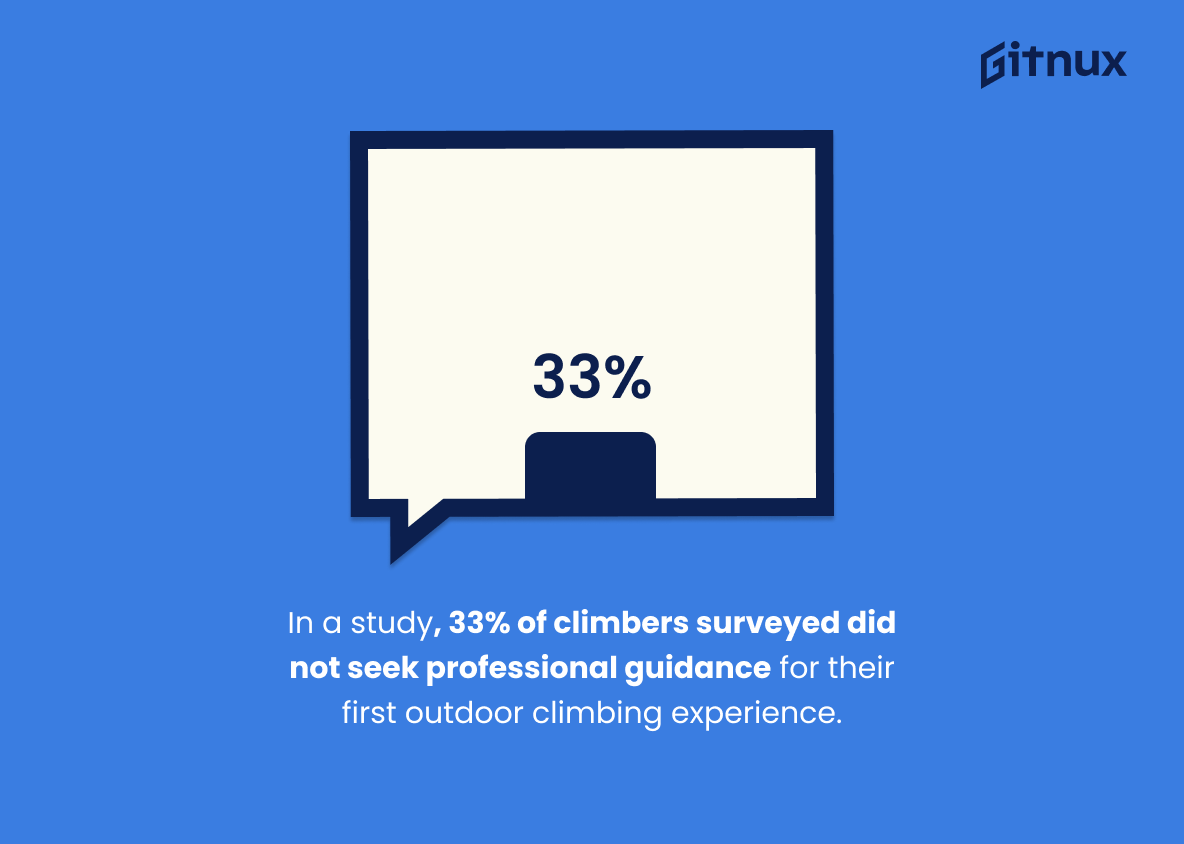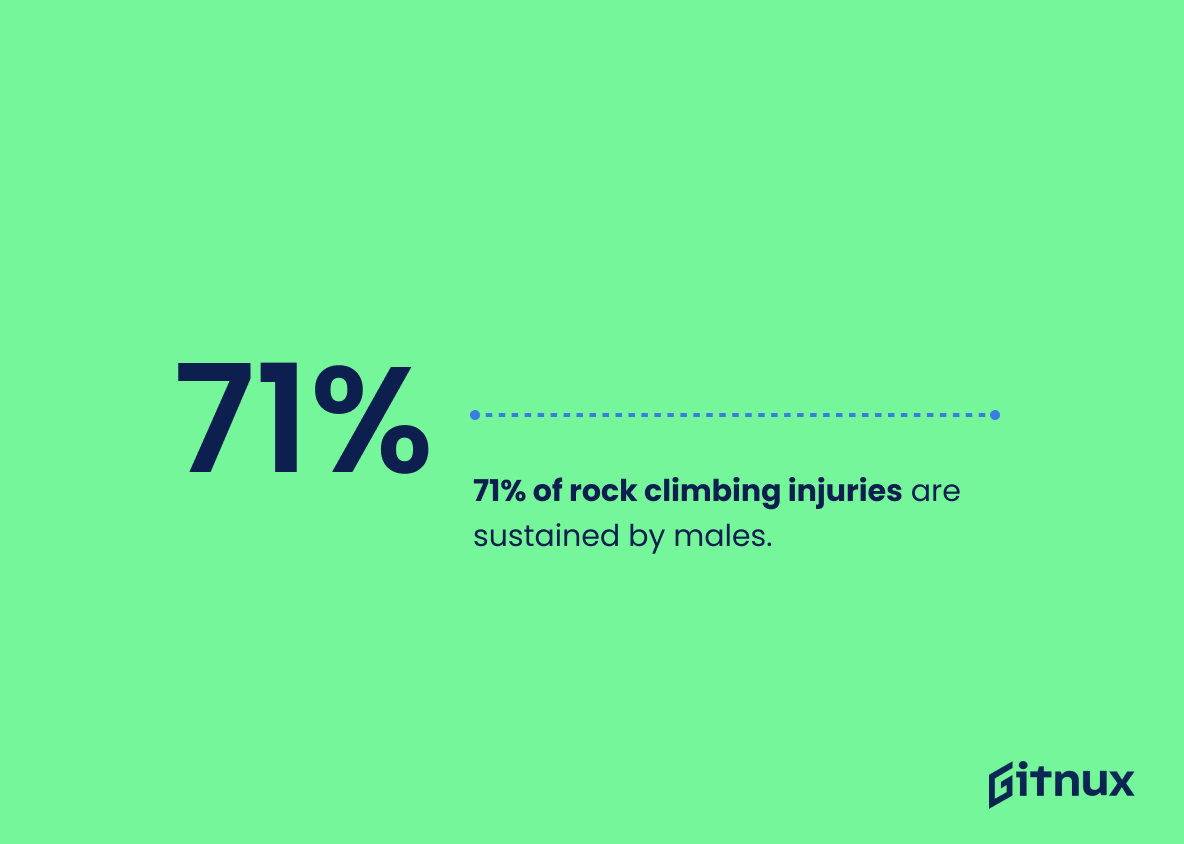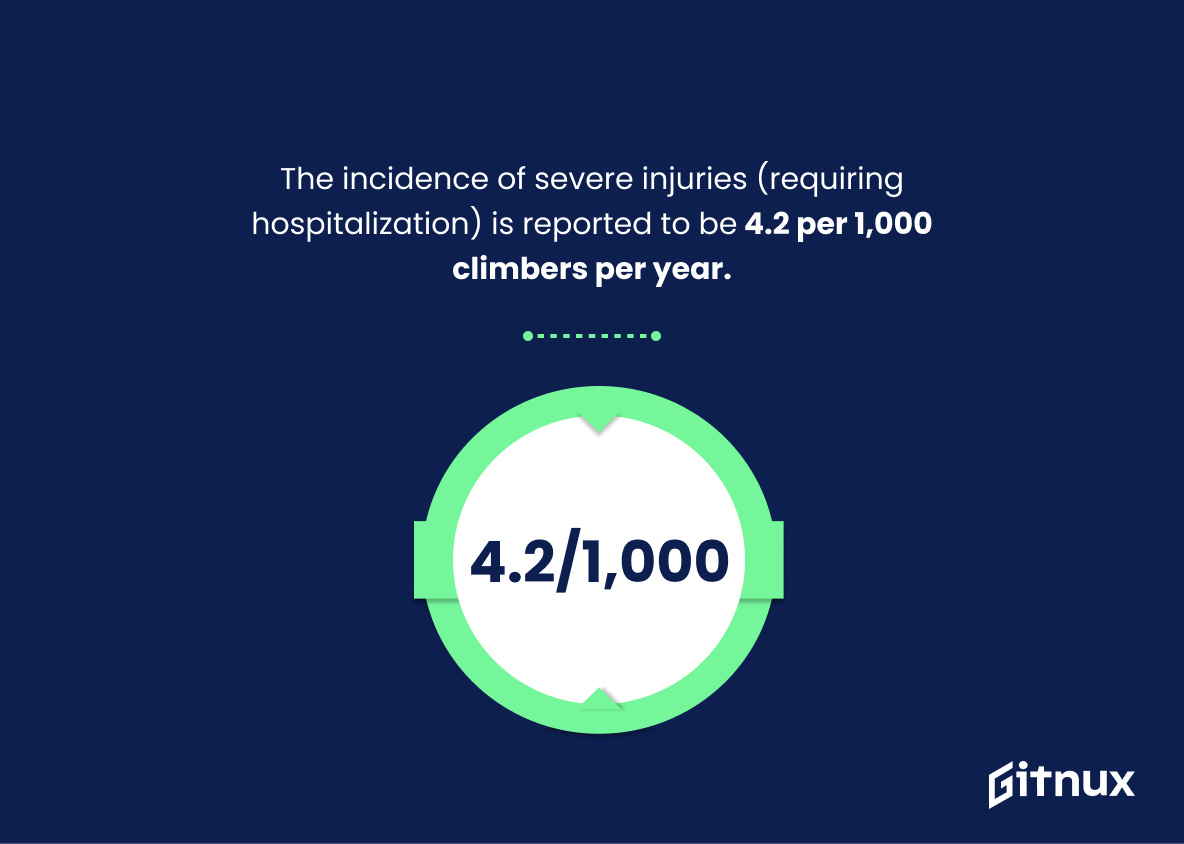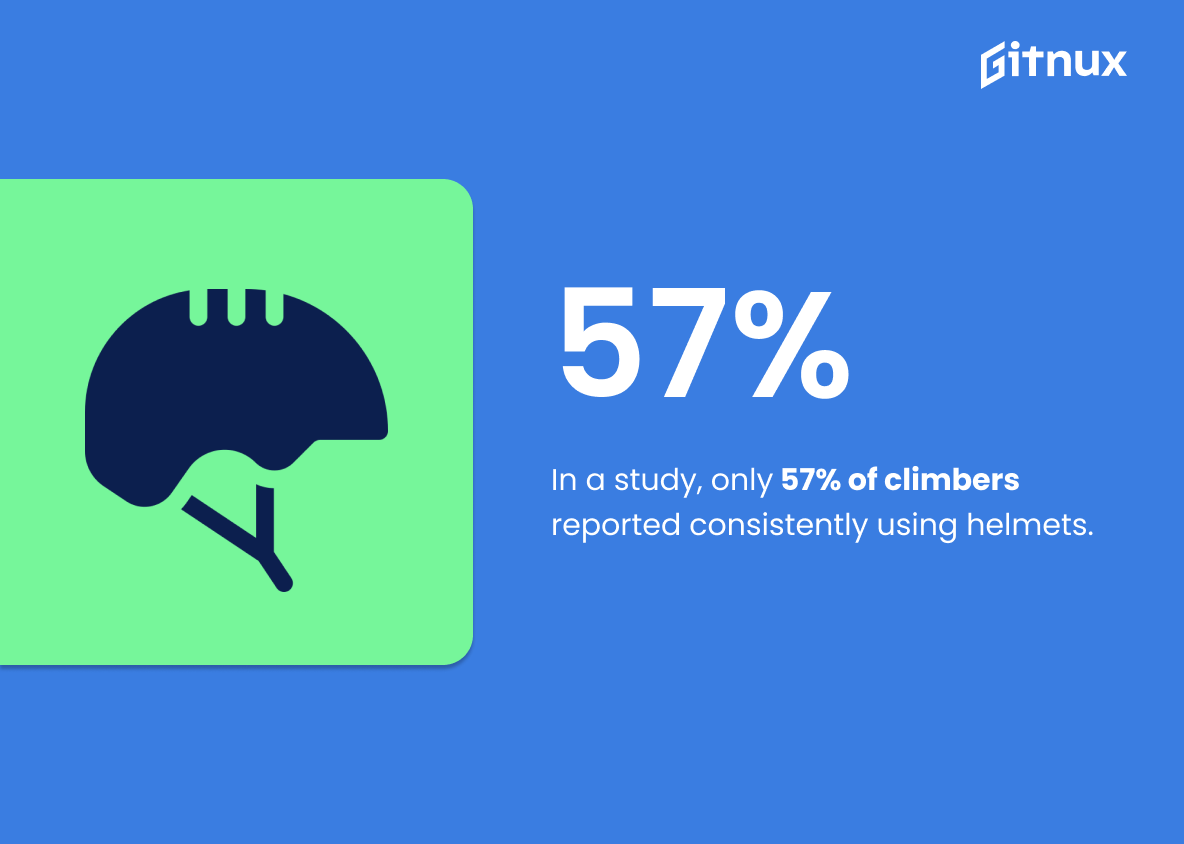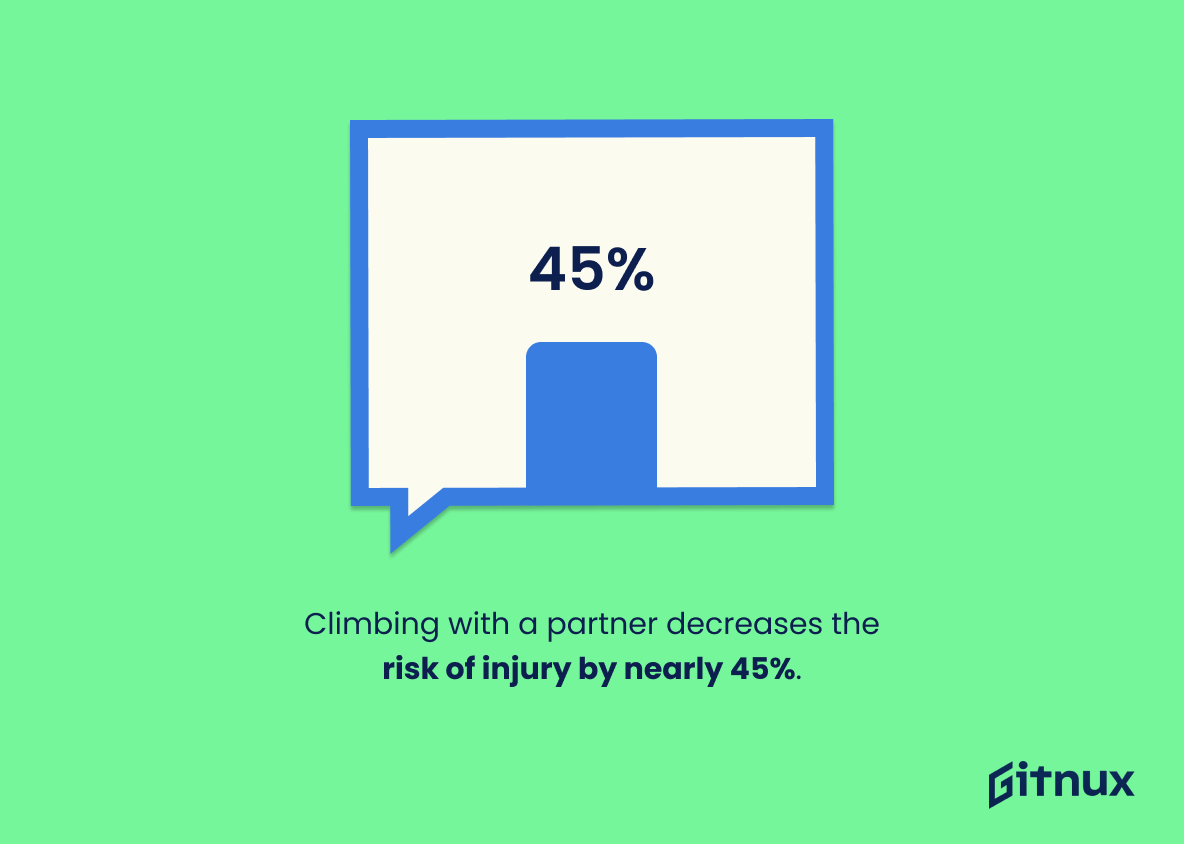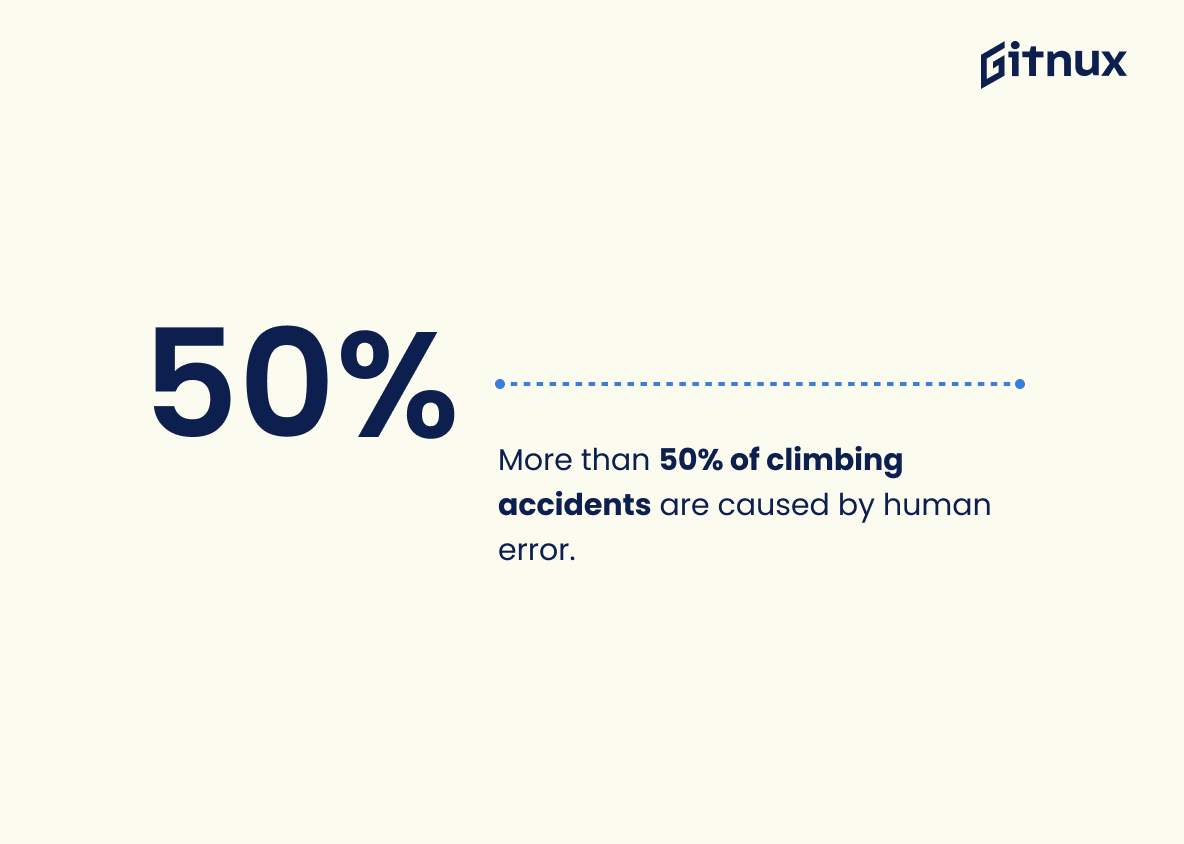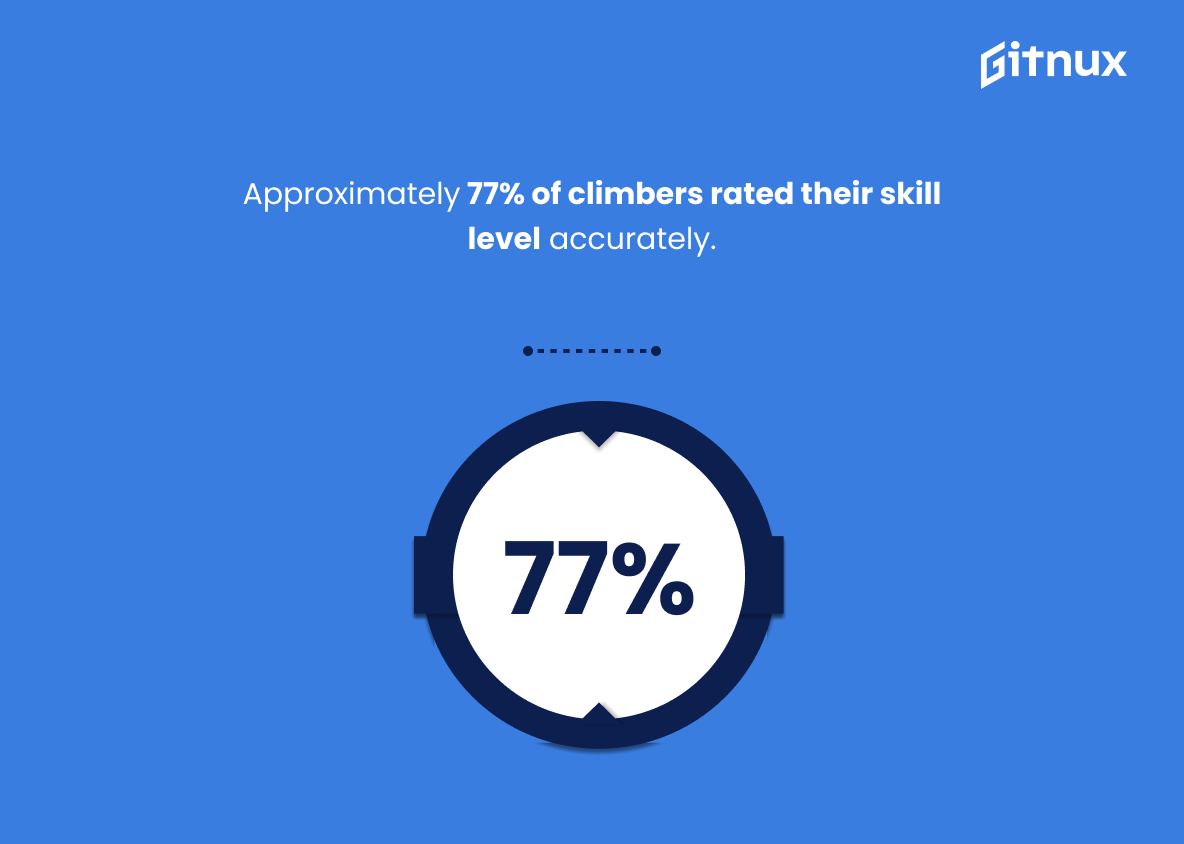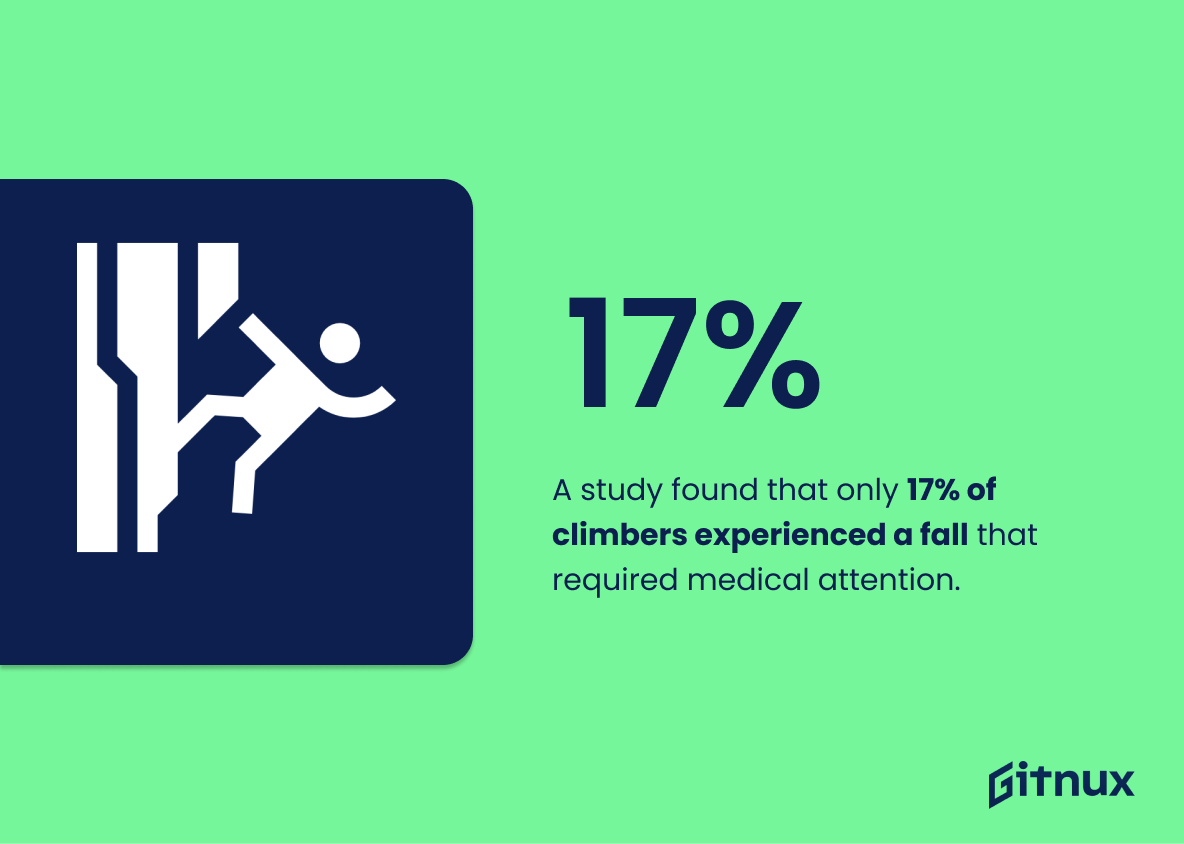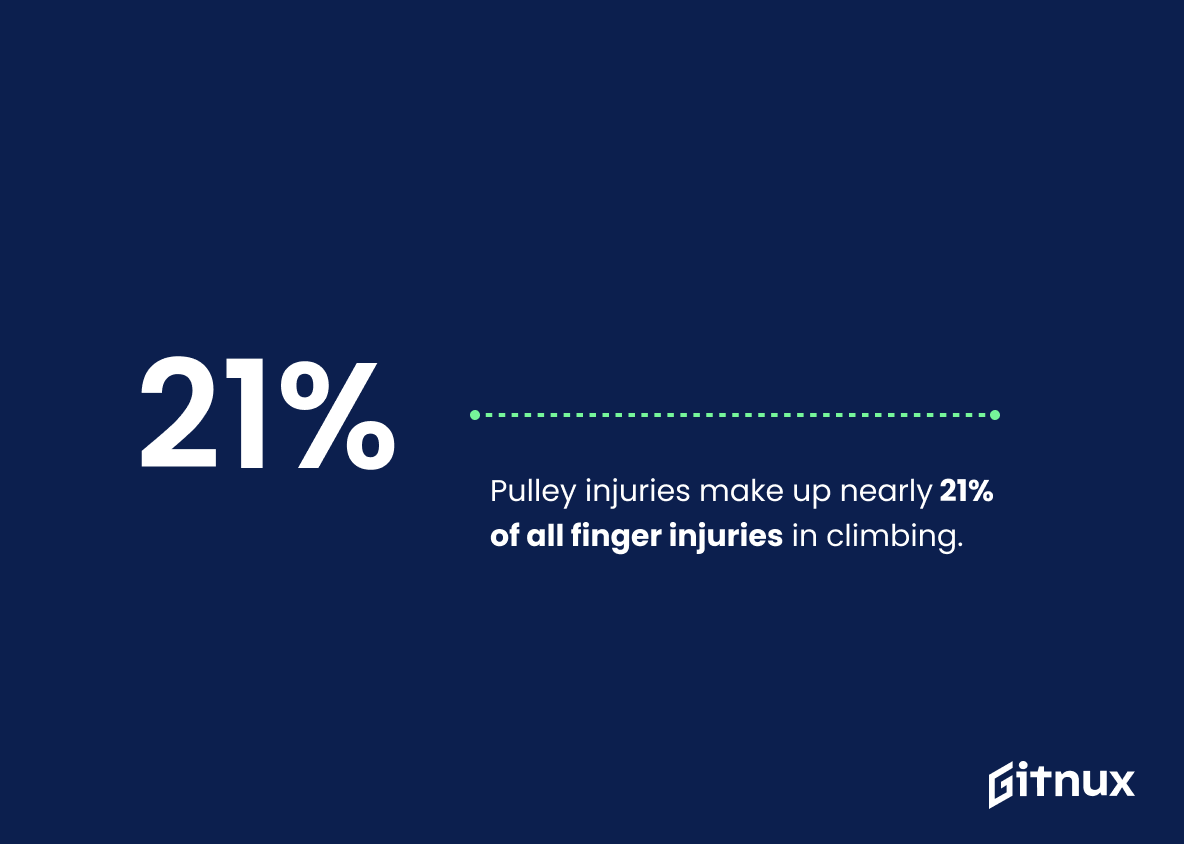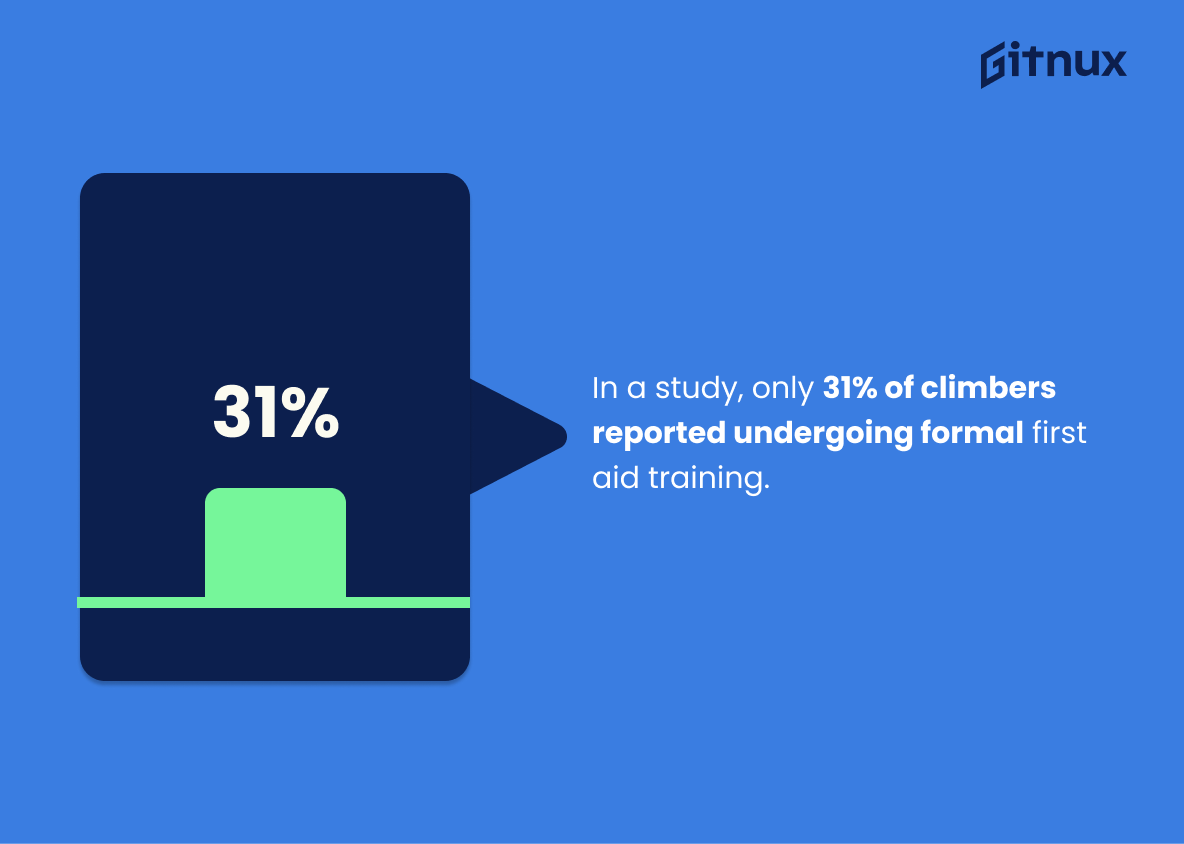Rock climbing is an increasingly popular sport, with millions of people participating in the United States alone. While it can be a thrilling and rewarding experience, there are also risks associated with this activity that must not be overlooked. To ensure safety while rock climbing, it’s important to understand the statistics related to injuries and other potential hazards. This blog post will explore 20 different rock climbing safety statistics from various sources so you can make informed decisions about your own activities.
Rock Climbing Safety Statistics Overview
In 2015, approximately 5.9 million Americans participated in rock climbing.
This statistic is a testament to the growing popularity of rock climbing, highlighting the sheer number of people who are engaging in the activity. It is an important piece of information to consider when discussing rock climbing safety statistics, as it provides a baseline for the number of people who could potentially be affected by any safety issues.
In a study, 33% of climbers surveyed did not seek professional guidance for their first outdoor climbing experience.
This statistic is a stark reminder of the importance of seeking professional guidance when embarking on a rock climbing experience. It highlights the potential risks of not doing so, as 33% of climbers surveyed did not take the necessary precautions to ensure their safety. This statistic serves as a warning to all climbers, both experienced and novice, to take the necessary steps to ensure their safety when climbing outdoors.
71% of rock climbing injuries are sustained by males.
This statistic is a telling indication of the importance of safety when it comes to rock climbing. It highlights the fact that males are more likely to sustain injuries while rock climbing, and thus should take extra precautions to ensure their safety. This statistic is a reminder that rock climbing is a potentially dangerous activity, and that proper safety measures should be taken to minimize the risk of injury.
In 2013, there were 3.5 injuries per 1,000 hours of climbing wall usage.
This statistic is a telling indication of the safety of rock climbing walls. It provides a measure of the risk of injury associated with using a climbing wall, allowing climbers to make an informed decision about the safety of the activity. Furthermore, it serves as a benchmark for climbing wall operators to strive for in order to ensure the safety of their patrons.
The incidence of severe injuries (requiring hospitalization) is reported to be 4.2 per 1,000 climbers per year.
This statistic is a stark reminder of the potential risks associated with rock climbing. It serves as a warning to climbers that, while the activity can be thrilling and rewarding, it is also important to take the necessary safety precautions to avoid serious injury.
In a study, only 57% of climbers reported consistently using helmets.
This statistic is a stark reminder that helmet use is not as widespread as it should be among climbers. It highlights the need for more education and awareness about the importance of wearing a helmet while rock climbing. It also serves as a warning that more needs to be done to ensure that climbers are taking the necessary safety precautions to protect themselves while engaging in this activity.
Climbing with a partner decreases the risk of injury by nearly 45%.
The statistic that ‘Climbing with a partner decreases the risk of injury by nearly 45%’ is an important reminder of the importance of safety when rock climbing. It highlights the fact that having a partner to climb with can significantly reduce the risk of injury, and should be taken into consideration when planning a rock climbing trip. This statistic is a powerful reminder that safety should always be a priority when engaging in any outdoor activity.
More than 50% of climbing accidents are caused by human error.
This statistic is a stark reminder that rock climbing is a dangerous activity and that human error can be a major factor in climbing accidents. It highlights the importance of taking safety precautions and being aware of the risks associated with rock climbing. It also serves as a warning to climbers to be mindful of their own actions and to take responsibility for their safety.
In 2019, three to four climbers died for every 100,000 participants in the United States.
This statistic serves as a stark reminder of the risks associated with rock climbing. It highlights the importance of taking safety precautions when engaging in the activity, as even experienced climbers can be at risk of injury or death. It also serves as a warning to those considering taking up the sport, as it demonstrates the potential dangers that come with it.
Approximately 77% of climbers rated their skill level accurately.
The statistic that approximately 77% of climbers rated their skill level accurately is an important indicator of the level of safety awareness among climbers. It suggests that the majority of climbers are aware of their own abilities and are taking the necessary precautions to ensure their safety while climbing. This is a positive sign that climbers are taking the necessary steps to protect themselves and others while engaging in the sport. This statistic is a testament to the importance of safety in rock climbing and the importance of climbers being honest with themselves about their skill level.
A study found that only 17% of climbers experienced a fall that required medical attention.
This statistic is significant in the context of rock climbing safety statistics because it demonstrates that the majority of climbers are able to stay safe and avoid falls that require medical attention. This is encouraging news for those who are interested in taking up rock climbing, as it suggests that the activity can be enjoyed with a relatively low risk of serious injury.
Traditional climbing has a slightly higher injury risk than sport climbing (1.9% vs 1.6% respectively).
This statistic is a crucial reminder that rock climbing is an inherently risky activity, and that climbers should take the necessary precautions to ensure their safety. It highlights the fact that, while sport climbing may be slightly safer than traditional climbing, both styles of climbing still carry a significant risk of injury. This is an important point to consider when discussing rock climbing safety, as it emphasizes the need for climbers to be aware of the risks and take the necessary steps to protect themselves.
Pulley injuries make up nearly 21% of all finger injuries in climbing.
This statistic is a stark reminder of the importance of taking proper safety precautions when rock climbing. Pulley injuries are a common and potentially serious type of finger injury, and the fact that they make up nearly 21% of all finger injuries in climbing is a clear indication that climbers need to be aware of the risks and take steps to protect themselves.
In a study, only 31% of climbers reported undergoing formal first aid training.
This statistic serves as a stark reminder of the importance of first aid training for rock climbers. With such a low percentage of climbers having undergone formal training, it is clear that more needs to be done to ensure that climbers are adequately prepared to handle any medical emergencies that may arise while out on the rocks.
Conclusion
Rock climbing is a popular sport that has seen an increase in participation over the years. However, it is important to be aware of the potential risks associated with this activity and take steps to ensure safety while participating. The statistics presented here demonstrate that there are approximately 25,000 climbing-related injuries per year in the United States, 71% of which occur during descent. Additionally, males account for 71% of rock climbing injuries and traditional climbing carries a slightly higher injury risk than sport climbing (1.9% vs 1.6%). Furthermore, only 57 percent of climbers reported consistently using helmets and 31 percent reported undergoing formal first aid training – both essential components for safe practice when engaging in any type of outdoor recreation or adventure sports activities such as rock climbing. It is clear from these figures that more needs to be done to educate people on proper safety protocols before they embark on their next climb.
References
0. – https://www.www.rockandice.com
1. – https://www.pubmed.ncbi.nlm.nih.gov
2. – https://www.www.mountaineers.org
3. – https://www.bjsm.bmj.com
4. – https://www.www.researchgate.net
5. – https://www.americanalpineclub.org
6. – https://www.rockandice.com
7. – https://www.www.statista.com
8. – https://www.epdf.tips
9. – https://www.www.wemjournal.org
10. – https://www.www.reuters.com
11. – https://www.www.healthline.com
12. – https://www.www.ncbi.nlm.nih.gov
